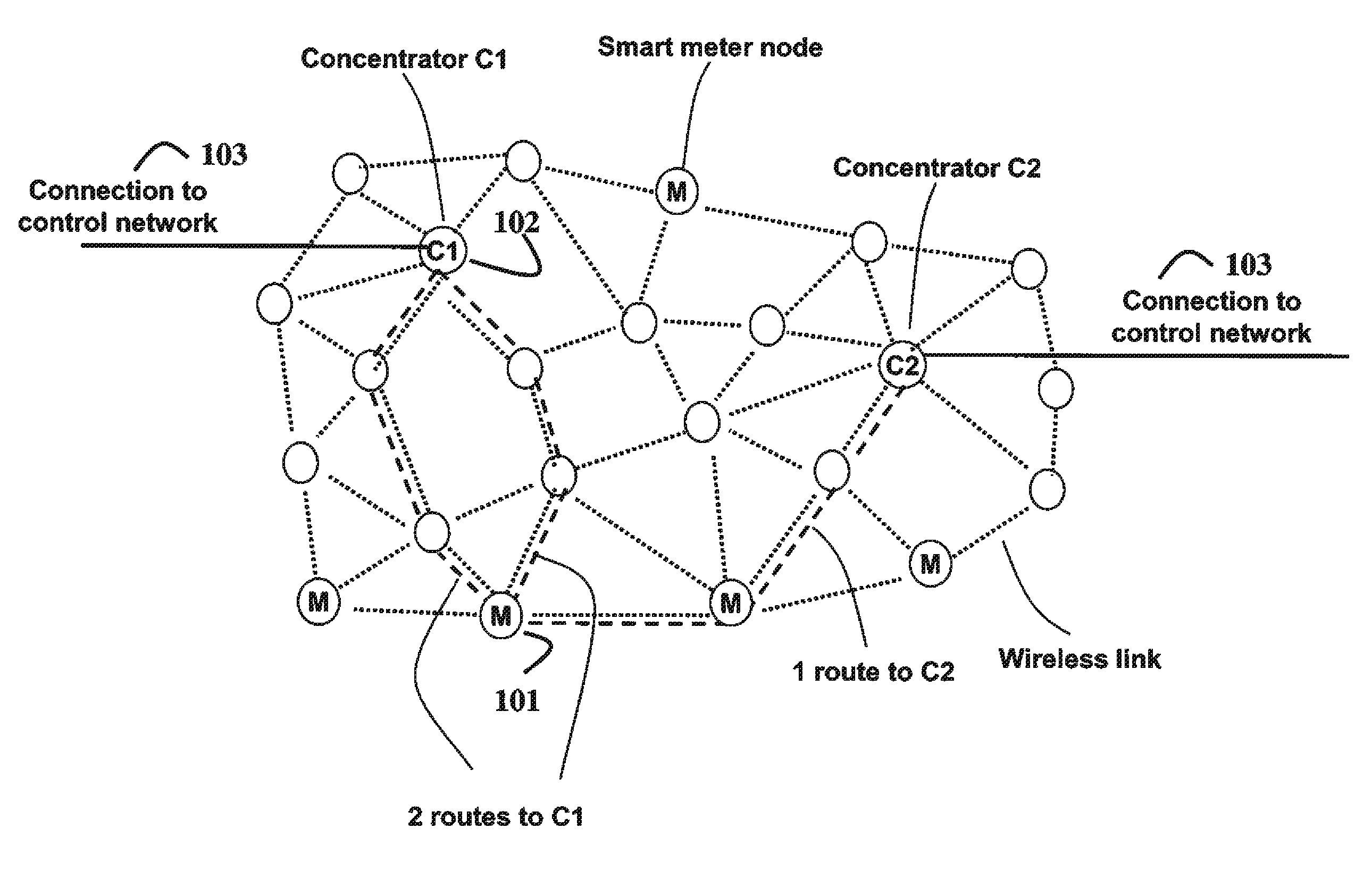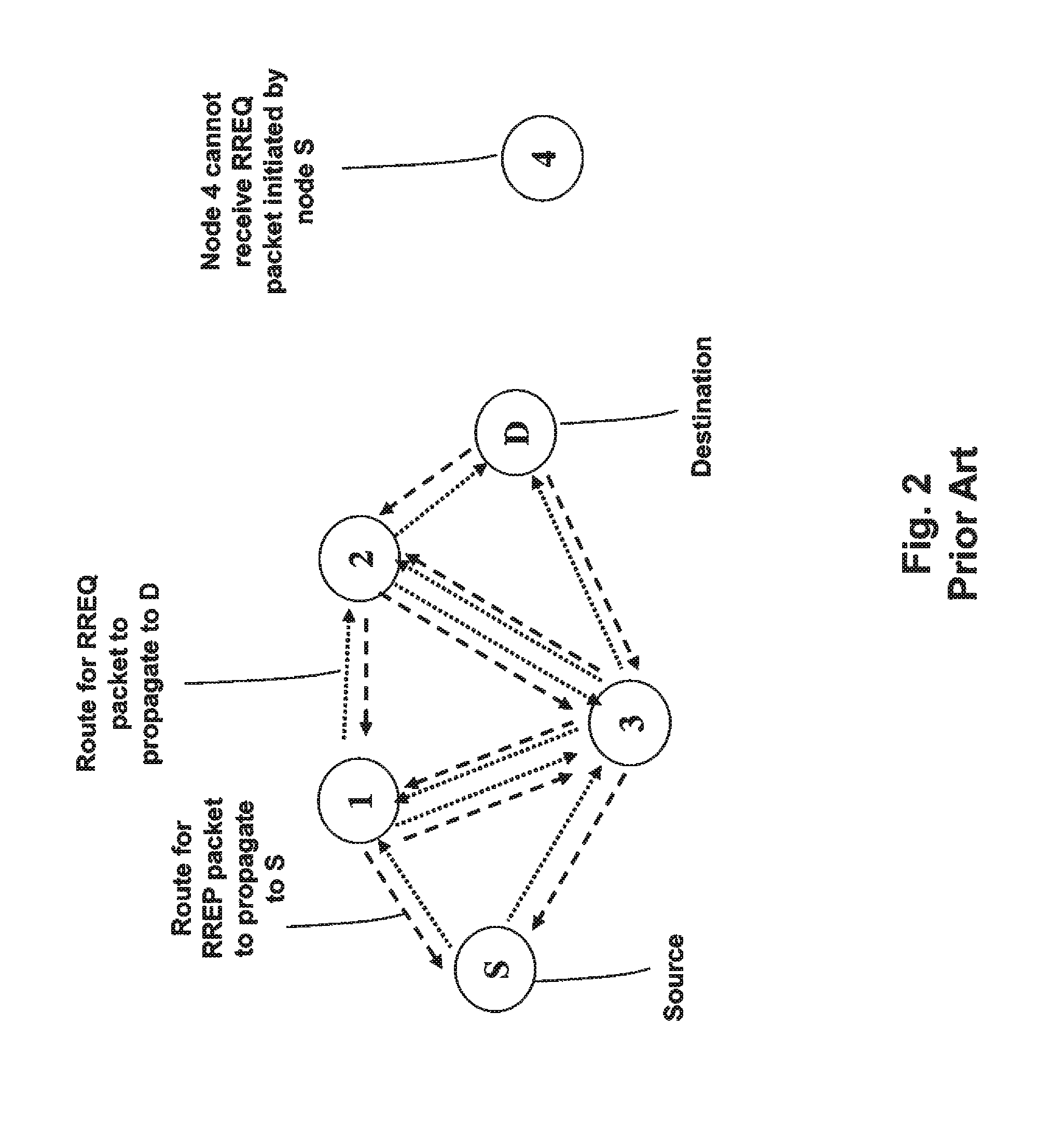Method for discovering and maintaining routes in smart meter networks
a smart meter and routing technology, applied in data switching networks, frequency-division multiplexes, instruments, etc., can solve the problems of reducing network bandwidth, packets can also be duplicated or stuck in loops, and achieve the effect of avoiding interference with other packet transmissions
- Summary
- Abstract
- Description
- Claims
- Application Information
AI Technical Summary
Benefits of technology
Problems solved by technology
Method used
Image
Examples
Embodiment Construction
[0034]The embodiments of the invention provide a method for discovering a set of routes in a smart meter network. The network includes a set of smart meter nodes and a set of concentrator nodes. An imaginary node is also specified for the network. As defined herein, a “set” includes one or more members. Each concentrator node broadcasts a route request (RREQ) packet. The RREQ packet is received by all nodes because the destination for the RREQ packet is the imaginary node I. Hence, each intermediate node also rebroadcasts the RREQ packet, because it cannot be the imaginary destination node. Because the RREQ includes a route specified in a nodes list (NL), after the receiving and rebroadcasting the RREQ packets, each smart meter node has a set of routes specified in the received RREQ packets and stored in a route table (RT) at the node, from which to select primary and secondary routes.
[0035]We discover the set of loop-free routes while minimizing the number of broadcasted RREQ packe...
PUM
 Login to View More
Login to View More Abstract
Description
Claims
Application Information
 Login to View More
Login to View More - R&D
- Intellectual Property
- Life Sciences
- Materials
- Tech Scout
- Unparalleled Data Quality
- Higher Quality Content
- 60% Fewer Hallucinations
Browse by: Latest US Patents, China's latest patents, Technical Efficacy Thesaurus, Application Domain, Technology Topic, Popular Technical Reports.
© 2025 PatSnap. All rights reserved.Legal|Privacy policy|Modern Slavery Act Transparency Statement|Sitemap|About US| Contact US: help@patsnap.com



